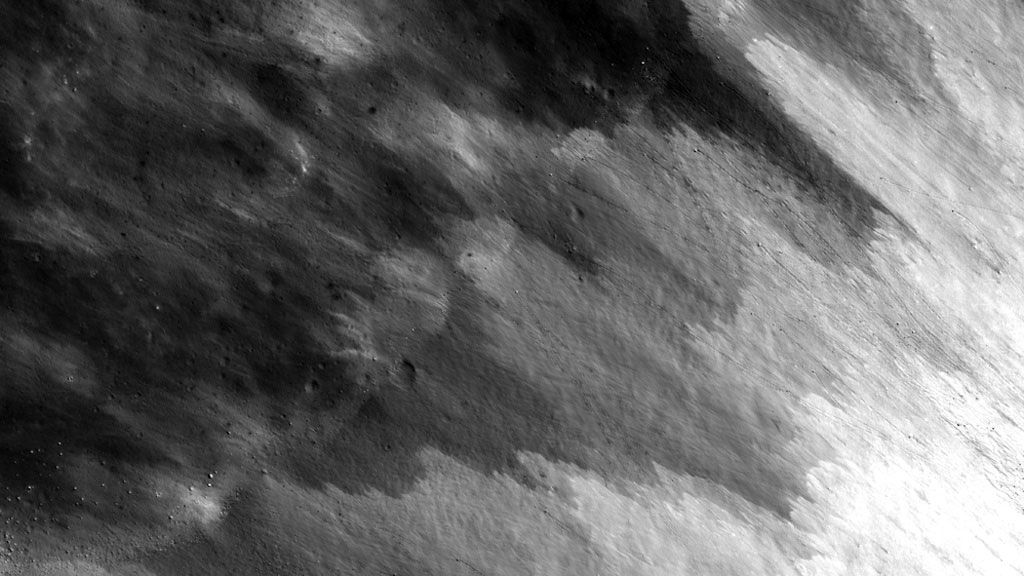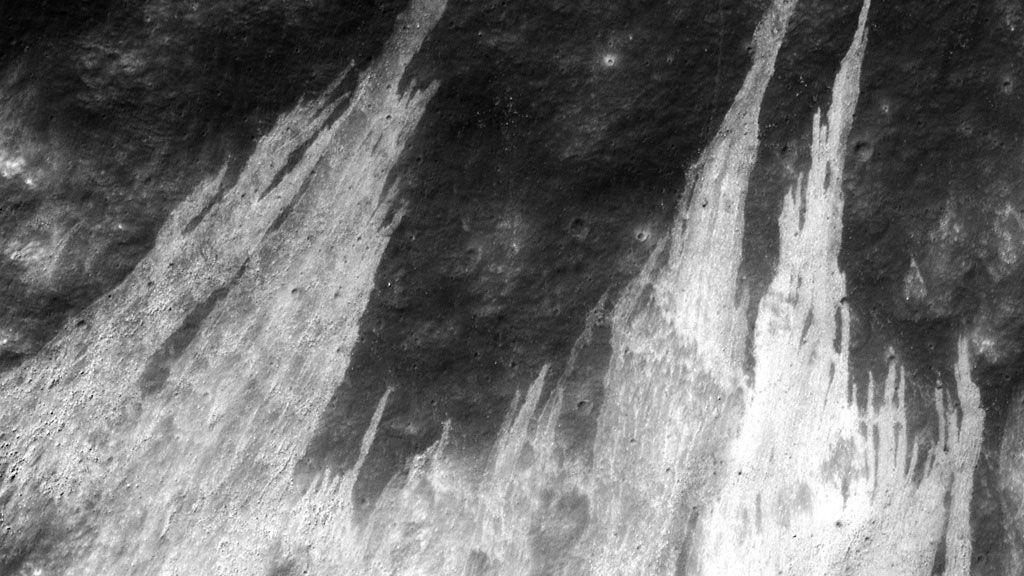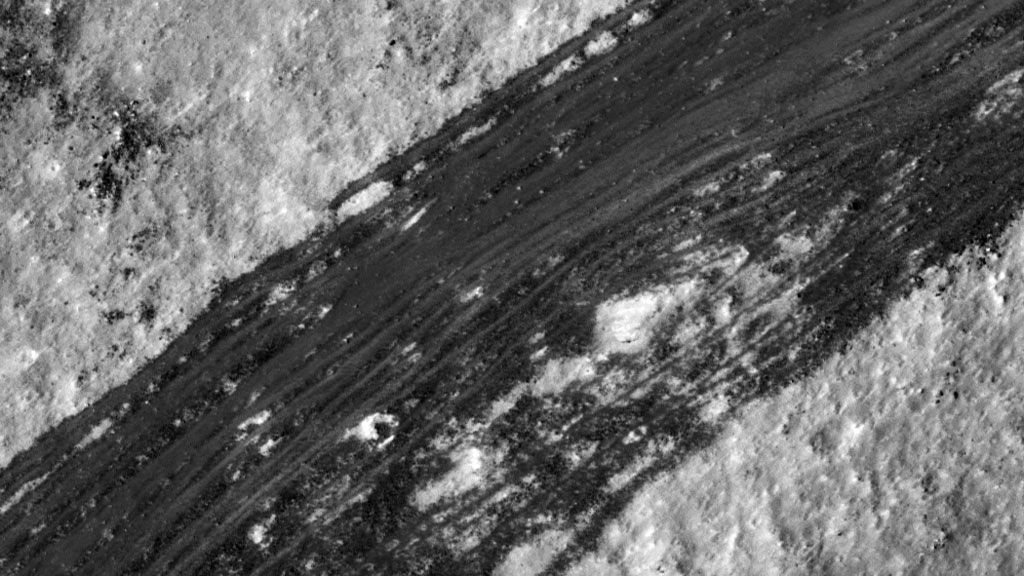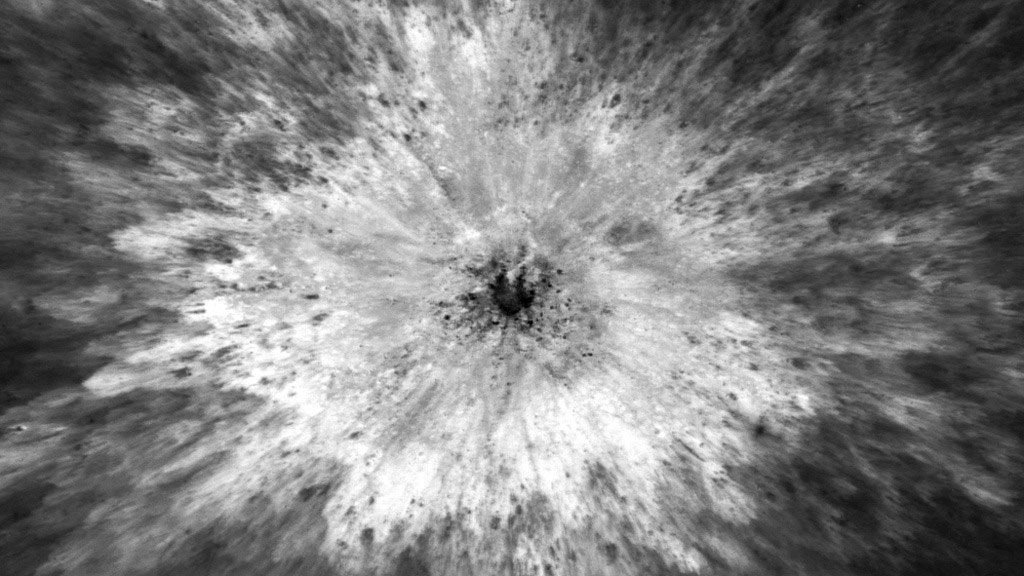These Photos From a Lunar Orbiter Could Be Abstract Art
Our distant view of the Moon from Earth is nice, but these close-ups are amazing
Travel in space gives the human race’s ego a good boost — it’s beyond impressive that we can land robots on other planets and asteroids — but it also humbles as it tells us more about our place in the universe. Still, however far we may reach, we’ll always have fondness for the first non-Earth surface to receive the impressions of human footprints: the Moon.
These stunning images from NASA give a view of the lunar surface—up close. For the NASA Visualization Explorer, an app that highlights the images and visualizations enabled by the agency’s satellites, Leslie Willoughby writes:
Since 2009, NASA’s Lunar Reconnaissance Orbiter (LRO) spacecraft has collected hundreds of thousands of images of the moon and beamed them to Earth. Combined into a global mosaic, the images provide a dynamic look at how the moon’s surface is changing over time. But individually, the striking visual contrasts of the grey-tone landscapes convey rich texture and abstract beauty.
If the images above inspired you, take a look at the full "Moon as Art" collection NASA released on the LRO’s fifth anniversary last June.




